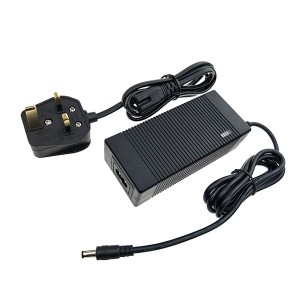When charging the lithium-ion battery, the charging current and charging voltage should be controlled according to the time sequence. Therefore, the research work on the power lithium-ion battery charger must be carried out gradually on the basis of clearly grasping its charging and discharging characteristics, that is, the main factors affecting the charging performance of lithium-ion batteries: voltage and current.
1. Voltage. The nominal voltage of lithium-ion batteries is generally 3.6V or 3.7V (depending on the manufacturer). The charge termination voltage (also called floating voltage or floating voltage) is generally 4.1V, 4.2V, etc., depending on the specific electrode material. Generally, the termination voltage is 4.2V when the negative electrode material is graphite, and the termination voltage is 4.1V when the negative electrode material is carbon. For the same battery, even if the initial voltage is different during charging, when the battery capacity reaches 100%, the final voltage will reach the same level. In the process of charging a lithium-ion battery, if the voltage is too high, a large amount of heat will be generated inside the battery, which will damage the positive electrode structure of the battery or cause a short circuit. Therefore, it is necessary to monitor the charging voltage of the battery during the use of the battery to control the voltage within the allowable voltage range.
2. Current. The charging process needs to control the charging current. The charging current of the battery is determined by the nominal capacity of the battery. The nominal capacity symbol is C, and the unit is “Ah”. The calculation method is: C = IT (1-1) In the formula, I is the constant current discharge current, and T is the discharge time. For example, to charge a battery with a capacity of 50Ah with a current of 50A, it takes 1 hour to fully charge the battery. At this time, the charging rate is 1C, and the commonly used charging rate is between 0.1C and 1C. Generally speaking, the charging process is divided into three types: slow charging (also called trickle charging), fast charging and ultra-high-speed charging according to the different charging rates. The current of slow charging is between 0.1C and 0.2C; the charging current of fast charging is greater than 0.2C but less than 0.8C; the charging current of ultra-fast charging is greater than 0.8C. Since the battery has a certain internal resistance, its internal heating is related to the current. When the working current of the battery is too large, its heat will cause the temperature rise of the battery to exceed the normal value, which will affect the safety of the battery and even cause an explosion. In the early stage of charging, even if the battery is too deeply discharged, it cannot be directly charged with a large current. And as the charging continues, the battery’s ability to accept current is correspondingly reduced. Therefore, in the process of charging the battery, the charging current must be controlled according to the specific state of the battery.









